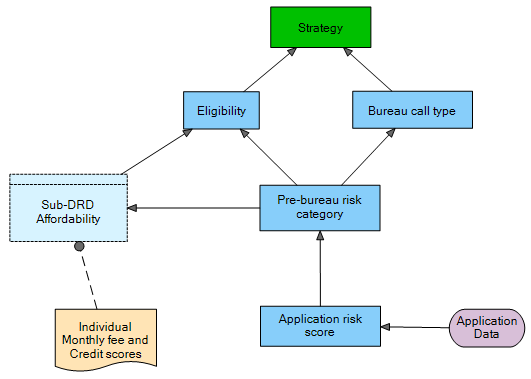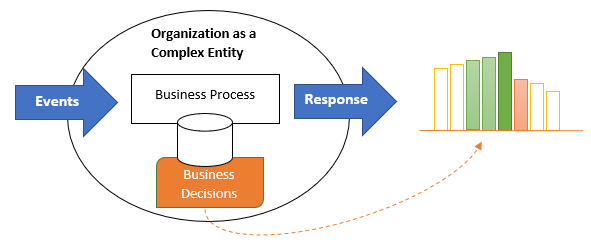Let me start by saying that a business rule is far more granular than a business decision, and that the two should never be confused. Today, it is an unfortunate fact that some vendors would have potential clients believe that there is synergy between business rules and business decisions. Perhaps this is because in an effort to differentiate one business rules management system from another, a zealous marketing manager decided that the word ‘decision’ rather than ‘rule’ suggested a more powerful solution to everyday business transactions.

Figure 1 – A Sample Business Rule that ensures validation of data
A Business Rule is not a Business Decision
It is true to say that the ultimate goal of both business decisions and business rules is to help the business reach a decision that enables it to run more efficiently and effectively, as well as profitably in most cases. The original concept of business rules management systems enabled end-users to craft and model an end-to-end process without the need to involve IT every step of the way. As such, a business rule was defined as one point in a detailed process of implementation, constraint handling, and data management. It could never be mistaken for a business decision, which is effectively the end point of an entire transaction.
Unlike a business rule, which is akin to a cog in a very large wheel, a business decision is something that is innately understood by a subject matter expert at a glance. It is very often also capable of recognizing and addressing exceptions to the business rules that drive the ultimate decision.
For example, a policy may be represented as a collection of business rules, but it may be better if these are modelled as a series of business decisions. In such cases, a business decision regarding whether or not to approve a customer loan, for example, would constitute a business decision based on an organizational policy which may be the outcome of the execution of a large number of business rules.

Figure 2 – A sample of a Loan Approval Decision Strategy
As business decisions exist in different levels of abstraction, they may be dependent on a complex hierarchy and sequential flow of the business rules which ultimately drive that decision. So each input to the business decision is ostensibly supported by an entire network of dependencies that are driven by business rule outcomes.
Measuring Efficiency
Unlike business decisions, business rules are not typically measured for their efficiency. There are rarely key performance indicators attributed to a business rule. In a process involving thousands of rules, this would be an exercise in futility. Rather, business rules and their impacts must be understood and modeled by subject matter experts who recognize the desired outcomes based on business decisions. It is true to say that business decisions deliver a tangible result and are related to business processes, especially when it comes to service levels. This is where KPIs typically come into play.

Figure 3 – Measuring the Performance of Business Decisions based on a KPI
The fact is that unlike a business rule, which is simply one part of what is often a very large overall ‘ruleset’ designed to affect an outcome to a particular issue, a business decision relies on supporting logic to reach a measurable operational outcome that is part of a recognised business process. In other words, a business decision is far more complex in nature than a business rule. The bottom line is that a business decision is a logical and measurable conclusion that directly impacts day-to-day business transactions, whereas a business rule is not.